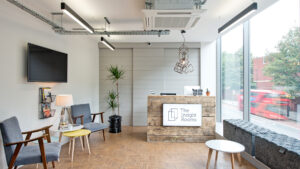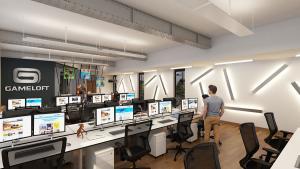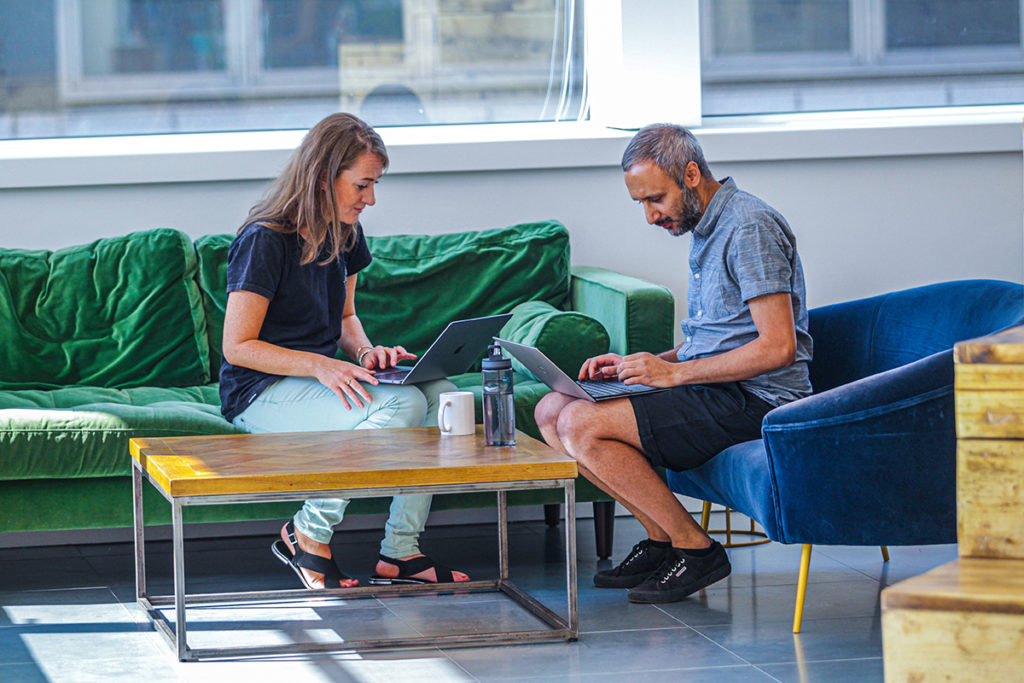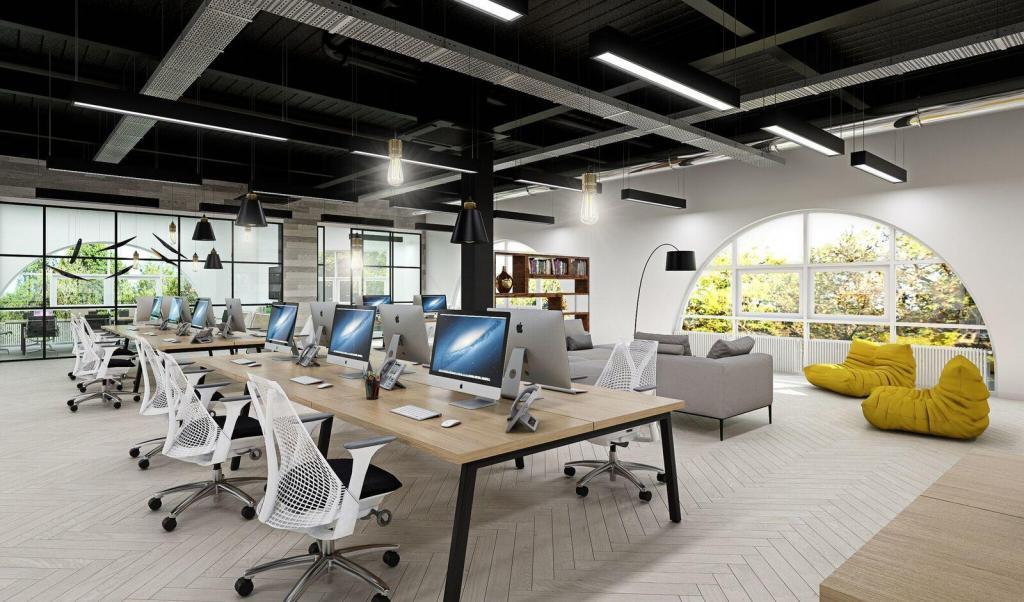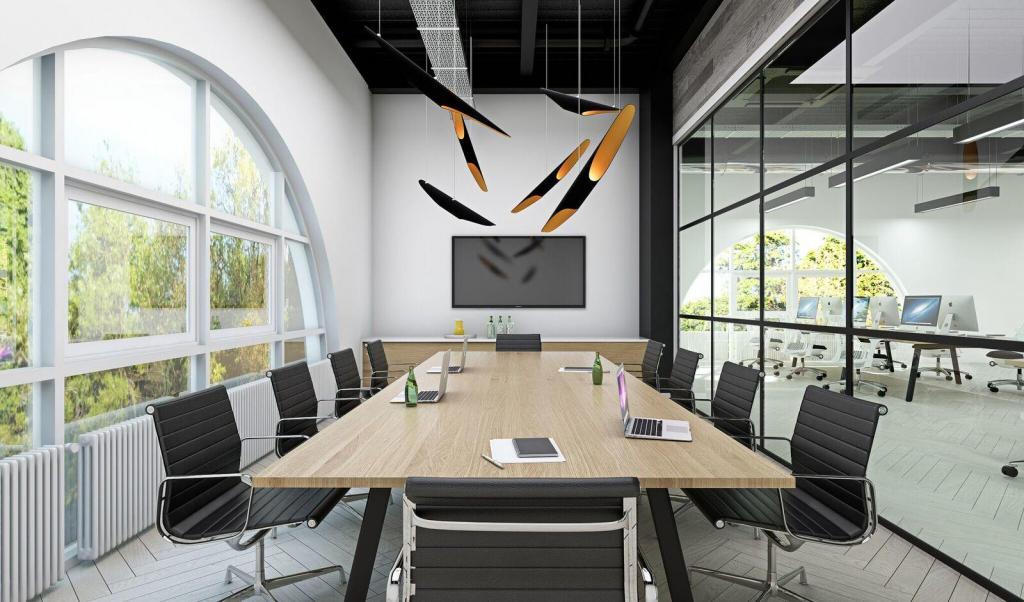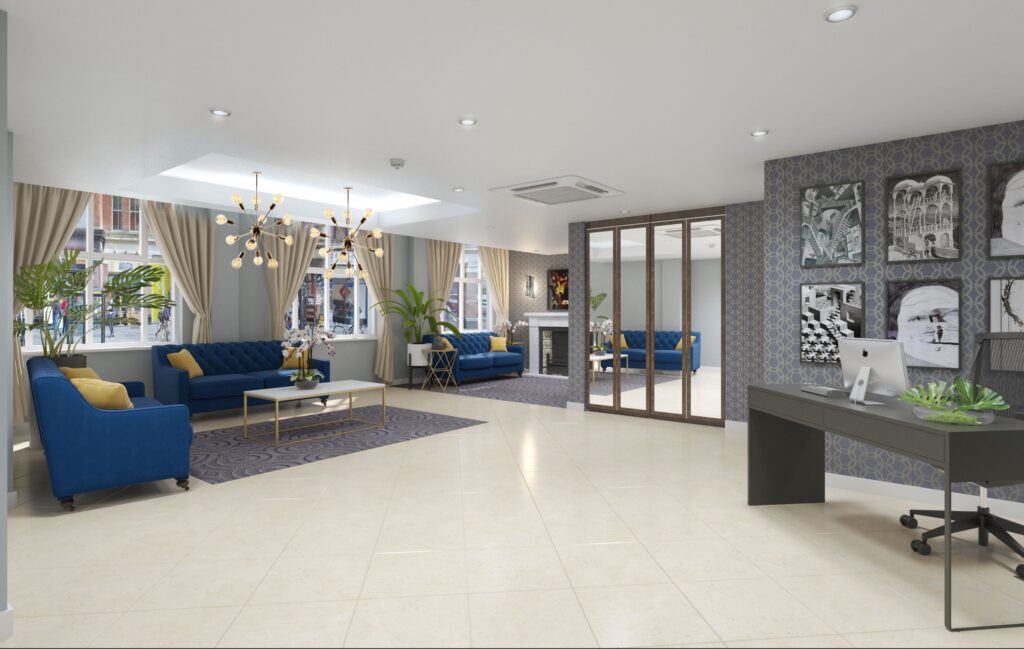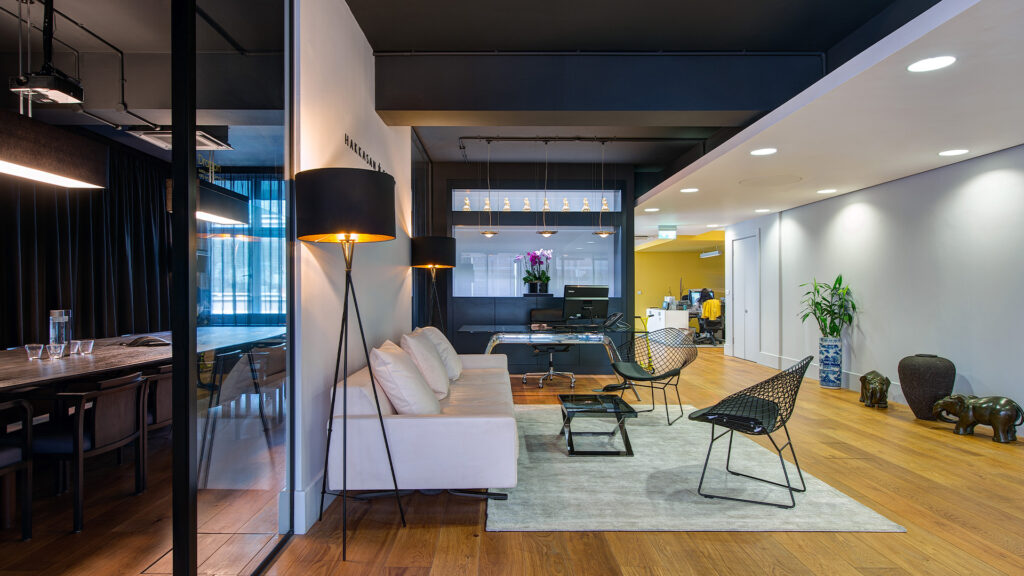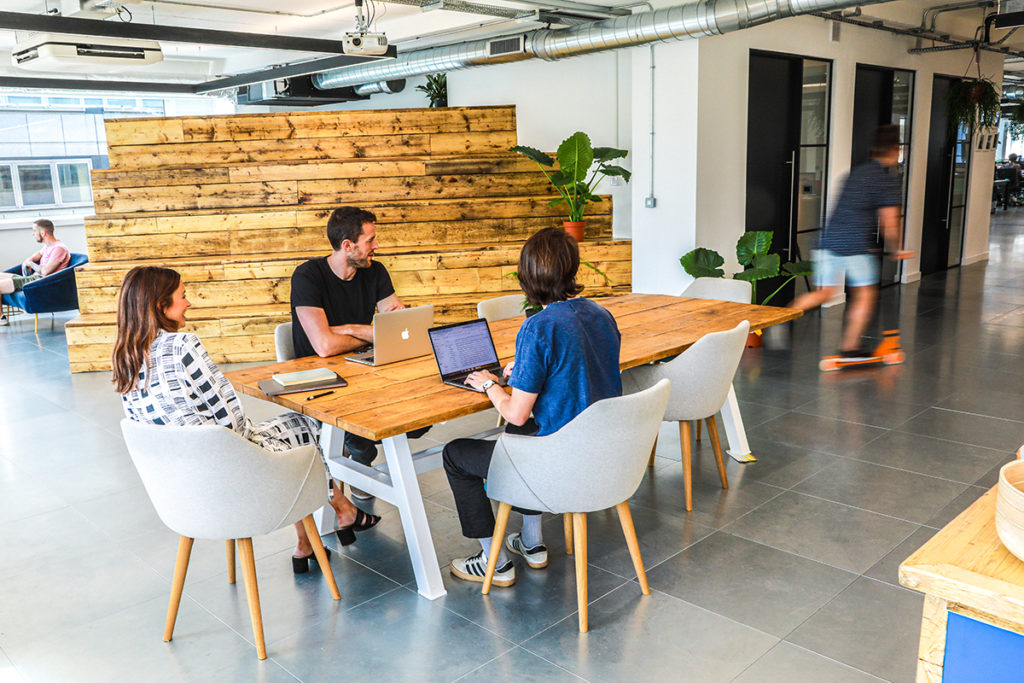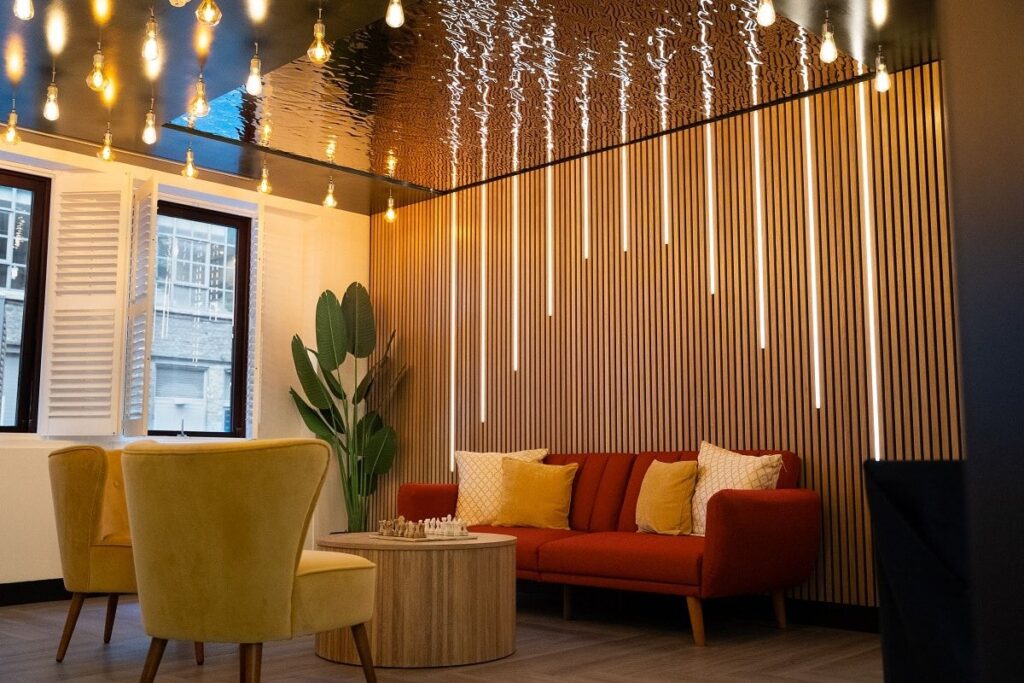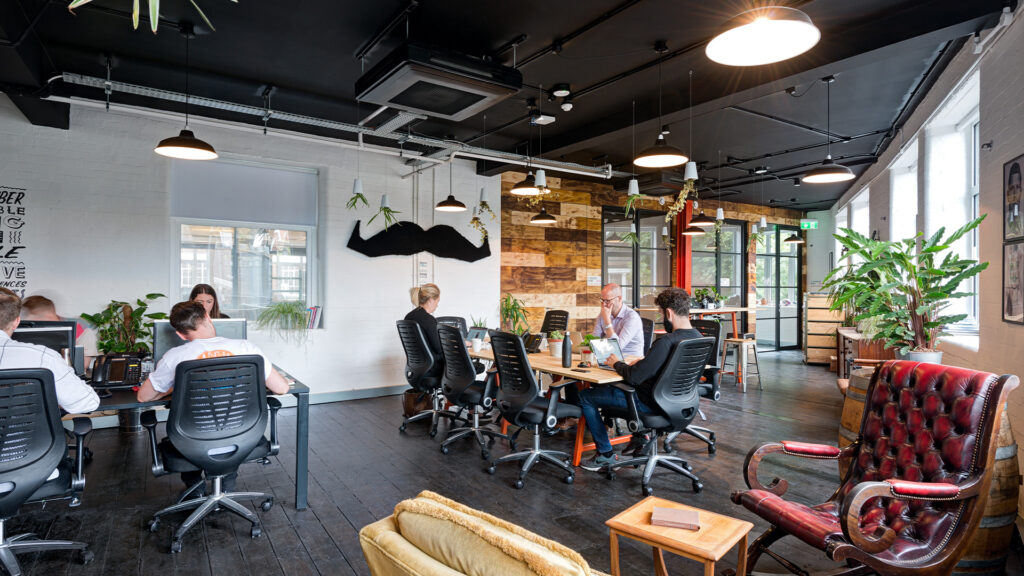A well-designed office can significantly impact productivity, employee satisfaction, and the overall success of a business. However, many offices suffer from common design flaws that can hinder the working environment and contribute to stress, distraction, and discomfort.
By addressing these issues thoughtfully, companies can create spaces that are not only functional but also conducive to creativity and well-being. This article explores nine common office design problems and their effective resolutions.
1. Poor Lighting
Lighting plays a pivotal role in any office environment, yet it is often overlooked. Poor lighting can cause eye strain, headaches, and fatigue, which ultimately decrease employee productivity. Many offices still rely on harsh fluorescent lighting, which can be uncomfortable for prolonged periods and contribute to a lack of focus.
Resolution
To resolve this, it is essential to incorporate a combination of natural and artificial light. Maximise the use of windows and place desks near natural light sources wherever possible. For artificial lighting, choose LED lights with adjustable brightness. Providing task lighting at workstations can help employees adjust the light according to their needs. The flexibility of dimmer switches throughout the office allows for a more comfortable working environment.
2. Lack of Privacy
Open-plan offices have become the norm in modern office design due to their ability to encourage collaboration. However, one major downside is the lack of privacy, which can lead to distractions and hinder concentration. The absence of private spaces also makes it difficult for employees to have confidential conversations, which may affect the quality of work.
Resolution
To address this, it’s important to incorporate areas where employees can enjoy some solitude. Designating quiet zones or private meeting rooms within the office allows employees to have a break from the noise and distractions. Consider installing acoustic panels or partitions to create soundproof spaces where employees can focus without interruptions. The ability to choose between collaborative and private spaces can lead to a more balanced, productive work environment.
3. Uncomfortable Furniture
When employees are sitting for long hours, having comfortable and ergonomic furniture is essential. Many offices still use outdated or uncomfortable furniture that contributes to poor posture and back pain, which can lead to long-term health issues and reduced productivity.
Resolution
The solution lies in investing in ergonomic office furniture, such as chairs that support the natural curve of the spine, adjustable desks, and keyboard/mouse setups that encourage proper posture. Ensuring the office furniture is flexible and adaptable to different employee needs can create a more comfortable work environment. An ergonomic setup not only reduces the risk of musculoskeletal problems but also promotes overall health and well-being.
You might like this guide: How Does Office Design Affect Productivity?
4. Inadequate Storage
Clutter is one of the biggest distractions in any office space. When employees lack sufficient storage options, it leads to messy desks and chaotic work environments, which can negatively affect focus and productivity.
Resolution
To remedy this, ensure your office design includes ample storage options such as cabinets, shelves, and filing systems. Creating a centralised location for shared office supplies can help reduce clutter. For documents and other physical items, consider incorporating filing systems or dedicated storage spaces that allow employees to keep their work organised and easily accessible. Encouraging a paperless environment where possible can also help streamline office management and reduce clutter.
5. Poor Air Quality
Air quality is a vital factor in any office environment. Poor ventilation can lead to headaches, fatigue, and difficulty concentrating. In buildings with limited airflow or in areas with higher levels of pollution, the air inside can become stale, affecting the overall comfort of employees.
Resolution
To improve air quality, install air purifiers and ensure there is proper ventilation throughout the office. Allow for natural ventilation by opening windows when possible. Indoor plants also provide a natural way to purify the air and can contribute to a calmer, more pleasant office atmosphere. By improving air quality, you create a healthier environment that promotes higher levels of energy and focus.
Research by the Royal College of Physicians highlights the negative effects of poor indoor air quality, which can cause respiratory issues and cognitive impairment. Investing in air quality solutions can significantly reduce these risks and enhance employee well-being.
6. No Personalisation
One of the most overlooked aspects of office design is the ability for employees to personalise their workspace. A generic, impersonal environment can lead to feelings of disconnection and a lack of ownership over the workspace.
Resolution
Encouraging employees to personalise their desks with small items, such as plants, photos, or personal décor, can help create a more welcoming and engaging environment. Personalisation promotes a sense of belonging and can help employees feel more comfortable in their workspace. It also contributes to a more positive office culture and boosts morale, which can have a significant impact on productivity.
7. Overcrowding
As businesses grow, office spaces often become overcrowded. Overcrowding leads to a lack of personal space, an increase in distractions, and decreased comfort, which can negatively impact both productivity and employee satisfaction.
Resolution
To tackle overcrowding, consider flexible office layouts that can adapt to the changing needs of the business. Hot-desking or shared workspaces can help make better use of available space. Creating multifunctional areas that can serve different purposes depending on the situation also reduces overcrowding and promotes better use of space. Businesses can implement a more collaborative, flexible work environment with fewer rigid partitions, encouraging employees to move freely around the office.
8. Lack of Break Areas
Employees need time to relax and recharge. Without designated break areas, employees may feel overwhelmed, which can reduce their focus and creativity. Having a space where they can disconnect from work for a few moments is crucial for maintaining mental health and productivity.
Resolution
Designate specific areas for employees to take breaks. These spaces should be comfortable and offer amenities like coffee machines, seating, and even recreational options like games or books. A well-designed break area can help employees de-stress and return to their tasks feeling refreshed and motivated. Providing spaces for relaxation not only improves employee well-being but also fosters a positive workplace culture.
9. Poor Acoustic Design
Noise pollution is a common issue in many offices, especially in open-plan layouts. Excessive noise can lead to distractions, reduced concentration, and an overall decrease in productivity. Whether it’s the sound of phone calls, chatter, or background machinery, noise is a significant problem in many workplaces.
Resolution
To improve acoustics, use sound-absorbing materials like carpets, curtains, and acoustic tiles on walls and ceilings. Partitioning noisy areas from quieter zones can help reduce distractions, and providing employees with noise-cancelling headphones can also help them focus better. A combination of these design elements will create a quieter and more focused office environment.
Research from the Acoustic Engineering Society indicates that excessive noise can reduce employee productivity by up to 30%. By improving the acoustics of your office, you create an environment where employees can work more effectively and with fewer distractions.
Final Design Notes
A well-thought-out office design is essential for ensuring the productivity, comfort, and overall well-being of your employees. Addressing common issues like poor lighting, lack of privacy, uncomfortable furniture, and overcrowding can have a significant impact on the office environment.
By implementing solutions like ergonomic furniture, better storage options, and flexible layouts, you can create an office space that not only looks great but also supports your employees’ health and productivity. A thoughtfully designed office is an investment that pays off in employee satisfaction, retention, and overall business success.
Related read: Design Features In Top-Performing Workplaces


